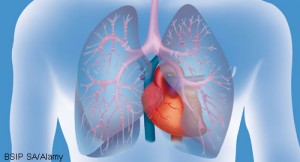 ACR CONVERGENCE 2020—Interstitial lung disease (ILD) is the main cause of death of systemic sclerosis (SSc) patients, and predicting its progression, which can fluctuate dramatically from patient to patient, has proven to be a complex endeavor.
ACR CONVERGENCE 2020—Interstitial lung disease (ILD) is the main cause of death of systemic sclerosis (SSc) patients, and predicting its progression, which can fluctuate dramatically from patient to patient, has proven to be a complex endeavor.
But a deepening understanding of how to monitor patients for ILD severity, as well as brightening prospects for therapy, were discussed in a Nov. 6 session at ACR Convergence.
Important Role of Monitoring
Monitoring is crucial to helping clinicians help their patients achieve the best outcomes possible, said Anna Hoffmann-Vold, MD, PhD, head of SSc research and SSc outpatient clinic at Oslo University Hospital, Norway. Recent research she led showed the unpredictable nature of ILD progression, pointing to the need to avoid relying only on baseline characteristics and instead track the entire picture of each patient.
Using the European Scleroderma Trials and Research (EUSTAR) database, researchers assessed the lung function of 826 patients with SSc-ILD, 535 of whom had multiple forced vital capacity (FVC) measurements available over an average of five years of follow-up.1 Over each 12-month period, about a third of the patients showed progressive ILD, but only a small portion of them showed rapidly progressive disease with FVC decline in every consecutive period.
Most patients, researchers found, followed a path of long, slow decline, with periods of stability, or even improvement, followed by decline. In fact, they found a third of the patients had no episodes of FVC decline. Over five years, the strongest predictors of FVC decline were male sex, a higher modified Rodnan skin score and reflux or dysphagia symptoms.
With this amount of variation in the clinical course of SSc-ILD, baseline high-resolution computed tomography is only partly helpful in predicting how patients will fare, Dr. Hoffmann-Vold said, although having no ILD at baseline is a good prognostic marker, with few of these patients going on to develop SSc-ILD.
As clinicians continue to assess the severity of ILD in their patients, a variety of measures should be used, Dr. Hoffmann-Vold stressed.
“Don’t rely just on one measure to assess severity and also, even more importantly, assess the risk of progression in your patients,” she said.
Dr. Hoffmann-Vold pointed specifically to oxygen desaturation on exercise tests. A study of SSc-ILD patients found that combining this metric with whether the patient has had arthritis seems to be a powerful predictor of ILD progression.2 Those who desaturated to 94% or lower during a six-minute walk test had a 36% chance of ILD progression over the next 12 months, and that finding, along with having had arthritis, meant an 86% chance of ILD progression, she said.
